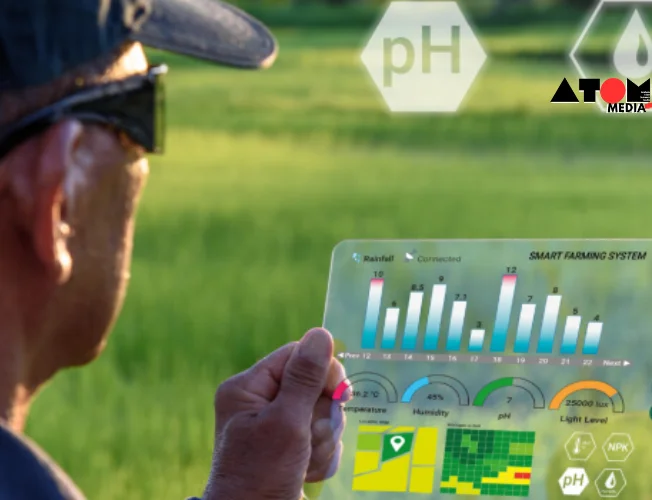Numerous issues confront the agriculture industry, including erratic weather patterns and shifting consumer needs. The Internet of Agricultural Things (IoAT), which makes use of IoT technologies specifically designed for agriculture, stands out as a crucial answer in this age of digital change. IoAT collects data from fields in real time by integrating networked devices including weather stations, drones, and sensors. When it comes to reducing risks and improving farming methods for higher yields and sustainability, this data is invaluable.
IoAT: Transforming Agriculture with Real-Time Environmental Insights
Important information on wind speed, precipitation, and temperature is provided by IoAT-enabled weather stations. In order to preserve crops from unfavourable weather, farmers should proactively address climate problems by modifying irrigation schedules during droughts or putting frost protection measures in place. Proactive farm management is made possible by early insights, which reduce potential losses from adverse weather.
Precision Irrigation and Soil Health Monitoring with IoAT
Precision irrigation management is one of the major contributions of IoAT. Real-time water level monitoring is made possible by soil moisture sensors, which enable accurate irrigation based on crop requirements. By avoiding problems like water stress and diseases brought on by overwatering, this not only optimises crop health but also conserves water resources. IoAT guarantees effective water use, supporting sustainable farming methods.
IoAT in Pest and Disease Management: Early Detection for Targeted Interventions
IoAT sensors allow for the early identification of illnesses and insect infestations by detecting minute changes in plant health markers. Farmers can minimise chemical use and stop the spread of pests by quickly using targeted treatments like helpful insects or organic pesticides. By mapping fields and identifying regions that need particular treatments, drones with sensors improve precision even further. This minimises environmental damage and maximises resource allocation.
Automation and Efficiency: Streamlining Farm Operations with IoAT
IoAT automates vital agricultural processes like irrigation and fertilisation (fertigation), going beyond risk management. Farmers are able to concentrate more on market prospects, crop planning, and strategic decisions because of this automation. IoAT increases total productivity and profitability by enabling players in the agricultural value chain to work more sustainably and efficiently.
Enhancing Transparency and Consumer Trust through IoAT
IoAT tracks crops along the whole supply chain, promoting transparency in agriculture. Consumer confidence in food safety and sustainability is increased by sensors, which offer information on crop origins, storage conditions, and transportation. By using IoAT, farmers can set themselves apart from the competition and charge more for products that come from sustainable sources.
Data-Driven Decision Making: Leveraging IoAT for Agricultural Insights
Large amounts of historical and current data are produced by IoAT, providing farmers with useful information to help them make decisions. Accurate production estimates, crop variety selection based on soil conditions, and optimal planting schedules are made possible by data analytics. Long-term sustainability objectives are supported by this data-driven strategy, which improves resource efficiency and profitability in agriculture.
Challenges and Future Prospects for IoAT in Agriculture
Even while IoAT has many advantages, there are still drawbacks, such as high upfront prices and poor rural coverage. IoAT adoption may be hampered for small-scale farmers by lack of resources and technical know-how. Ongoing technology developments and encouraging laws, however, should democratise access to IoAT and lower its cost for all farmers.
Promoting IoAT Adoption: Government Initiatives and Partnerships
The adoption of IoAT by small and marginal farms is greatly aided by government programmes and public-private partnerships. Financial gaps can be filled and farmers can be empowered to take advantage of the revolutionary potential of IoAT through subsidies, training programmes, and loan availability. These cooperative initiatives seek to guarantee equitable development and sustainable farming methods across the country by democratising access to technology.
The Future of Agriculture with IoAT
To sum up, the Internet of Agriculture and Technology (IoAT) heralds a new era in agricultural risk mitigation and productivity growth. IoAT gives farmers the tools they need to reduce risks, maximise resource use, and achieve sustainable growth by utilising real-time data and automation. As IoAT becomes more widely available and technology advances, it has the potential to completely transform global agriculture and ensure food security while having the least negative environmental effects. An agricultural industry that is robust and efficient in the future can be achieved by embracing IoAT now.
Read more: Marketing News, Advertising News, PR and Finance News, Digital News





